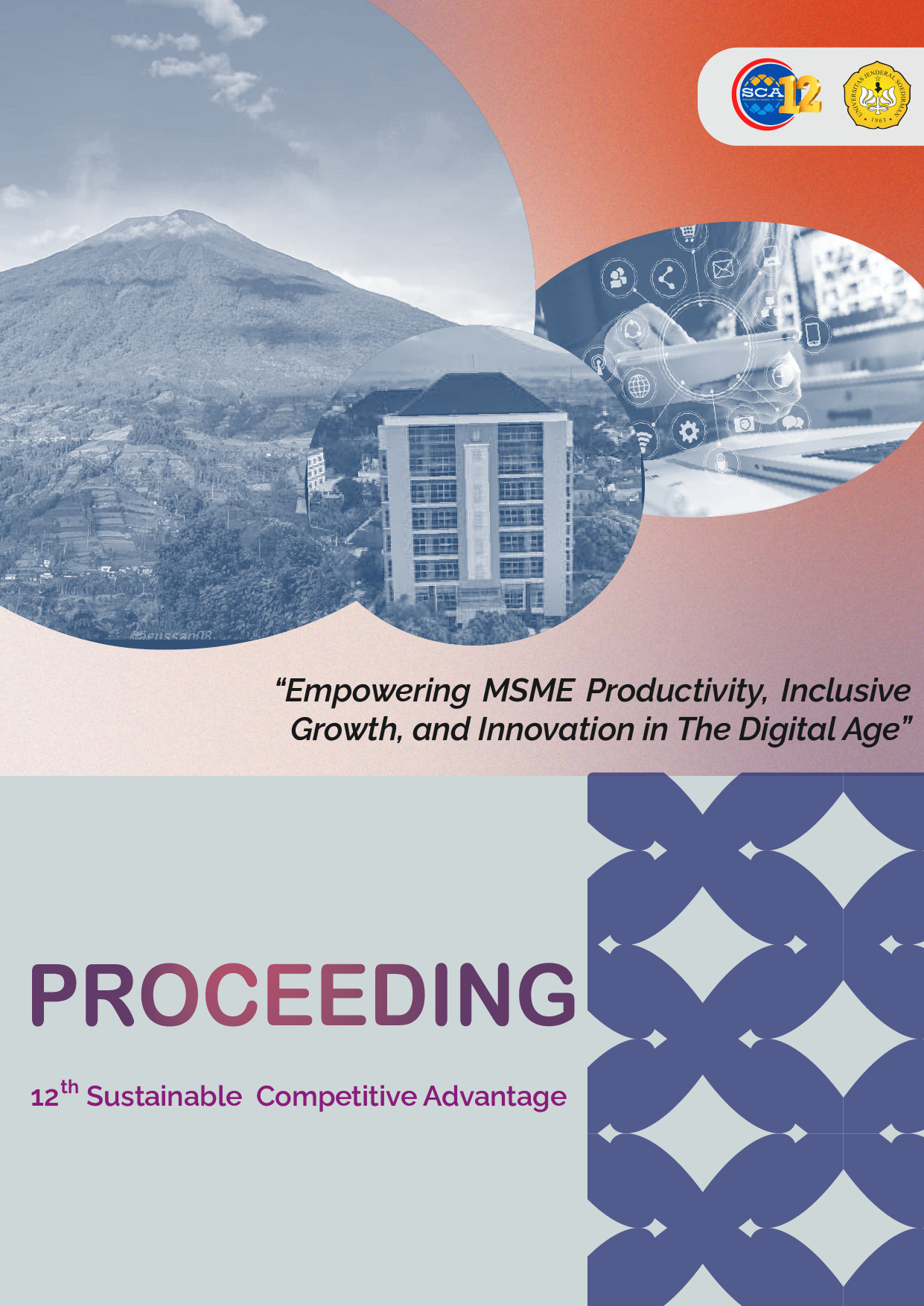Profitability and Economic Efficiency of the Hair Craft Creative Industry in Purbalingga Before and During the Covid-19 Pandemic
Abstract
Purbalingga is a regency in Central Java Province which is famous for its hair craft creative industry. During the Covid-19 pandemic, like any other business, it also experienced a period of declining performance. The purpose of this study was to analyze its profitability and efficiency before and during the pandemic. The method used was profit analysis and R/C ratio. Samples were taken based on purposive random sampling with hair craft entrepreneurs as respondents. The results showed that: (1) Before the pandemic, on average each hair craft entrepreneur earned IDR 4.96 million per month, where there were entrepreneurs whose profits reached a maximum of IDR 25 million and a minimum of IDR 500 thousand. During the pandemic, on average each entrepreneur suffered a loss of IDR305 thousand per month, where there were entrepreneurs who could still earn a maximum profit of IDR 4.5 million but there were also those who suffered a maximum loss of IDR 400 thousand per month. (2) Before the pandemic, the average R/C ratio of each entrepreneur was 1.6, meaning that the revenue was 1.6 times greater than the costs incurred. During the pandemic, the average R/C ratio of entrepreneurs did not reach 1, i.e. 0.96, meaning that revenues were unable to cover the costs (inefficiency). Thus, it can be concluded that the occurrence of a pandemic caused a decrease in its performance. Therefore, full support is needed from various parties so that this creative industry can still exist as a leading industry.
Keywords: Creative industry; hair craft; profitability; efficiency; featured product.
References
Amri, A. (2020). Dampak covid-19 terhadap UMKM di Indonesia. Jurnal Brand, 2(1), 147–153.
Bouey, J. (2020). Assessment of covid-19’s impact on small and medium-sized enterprises: Implications from China. In Testimony presented before the House Small Business Committee on March 10, 2020 (pp. 1–13). https://doi.org/10.7249/ct524
Carrillo-Larco, R. M., & Castillo-Cara, M. (2020). Using country-level variables to classify countries according to the number of confirmed covid-19 cases: An unsupervised machine learning approach. Wellcome Open Research, 5(June), 56. https://doi.org/10.12688/wellcomeopenres.15819.3
Cowling, M., Liu, W., Ledger, A., & Zhang, N. (2015). What really happens to small and medium-sized enterprises in a global economic recession? UK evidence on sales and job dynamics. International Small Business Journal: Researching Entrepreneurship, 33(5), 488–513. https://doi.org/10.1177/0266242613512513
Dong, Y., Mo, X., Hu, Y., Qi, X., Jiang, F., Jiang, Z., & Tong, S. (2020). Epidemiology of covid-19 among children in China. Pediatrics, 145(6), 1–12. https://doi.org/10.1542/peds.2020-0702
Ghosh, S. (2020). Examining the covid-19 relief package for MSMEs. Economic and Political Weekly, 55(22), 20–22
Hadiwardoyo, W. (2020). Kerugian ekonomi nasional akibat pandemi covid-19. Baskara Journal of Business and Enterpreneurship, 2(2), 83–92. https://doi.org/10.24853/baskara.2.2.83-92
Iswahyudi, H. (2016). Back to oil: Indonesia economic growth after Asian financial crisis. Economic Journal of Emerging Markets, 8(1), 25–44. https://doi.org/10.20885/ejem.vol8.iss1.art3
Jindrichovska, I. (2014). Financial management in SMEs. European Research Studies Journal, 16(4), 79– 95. https://doi.org/10.35808/ersj/405
Kirigia, J. M., & Muthuri, R. N. D. K. (2020). The fiscal value of human lives lost from coronavirus disease (COVID-19) in China. BMC Research Notes, 13(1), 1–5. https://doi.org/10.1186/s13104-020- 05044-y
Lemeshow, Stanley., 1997, Besar Sampel dalam Penelitian Kesehatan. Universitas Gadjah Mada.
Yogyakarta.
Liu, W., Yue, X. G., & Tchounwou, P. B. (2020). Response to the covid-19 epidemic: The chinese experience and implications for other countries. International Journal of Environmental Research and Public Health, 17(7), 1–6. https://doi.org/10.3390/IJERPH17072304
Lu, Y., Wu, J., Peng, J., & Lu, L. (2020). The perceived impact of the covid-19 epidemic: Evidence from a sample of 4807 SMEs in Sichuan Province, China. Environmental Hazards, 19(4), 323–340. https://doi.org/10.1080/17477891.2020.1763902
Milzam, M., Mahardika, A., & Amalia, R. (2020). Corona virus pandemic impact on sales revenue of micro small and medium enterprises (MSMEs) in Pekalongan City. Journal of Vocational Studies on Applied Research, 2(1), 7–10.
Nasution, D. A. D., Erlina, E., & Muda, I. (2020). Dampak pandemi covid-19 terhadap perekonomian Indonesia. Jurnal Benefita, 5(2), 212. https://doi.org/10.22216/jbe.v5i2.5313
Pakpahan, A. K. (2020). Covid-19 dan implikasi bagi usaha mikro, kecil dan menengah. Jurnal Ilmiah Hubungan Internasional, 20(April), 1–6.
Parth, K. (2020). The economic cost of COVID-19: A potential pandemic impact on Indian economy. International Journal of Advanced Science and Technology, 29(6 Special Issue), 2182–2192.
Tairas, D. R. (2020). Covid-19 pandemic and MSMEs : Impact and mitigation. Jurnal Ekonomi Indonesia, 9(1), 67–80.

